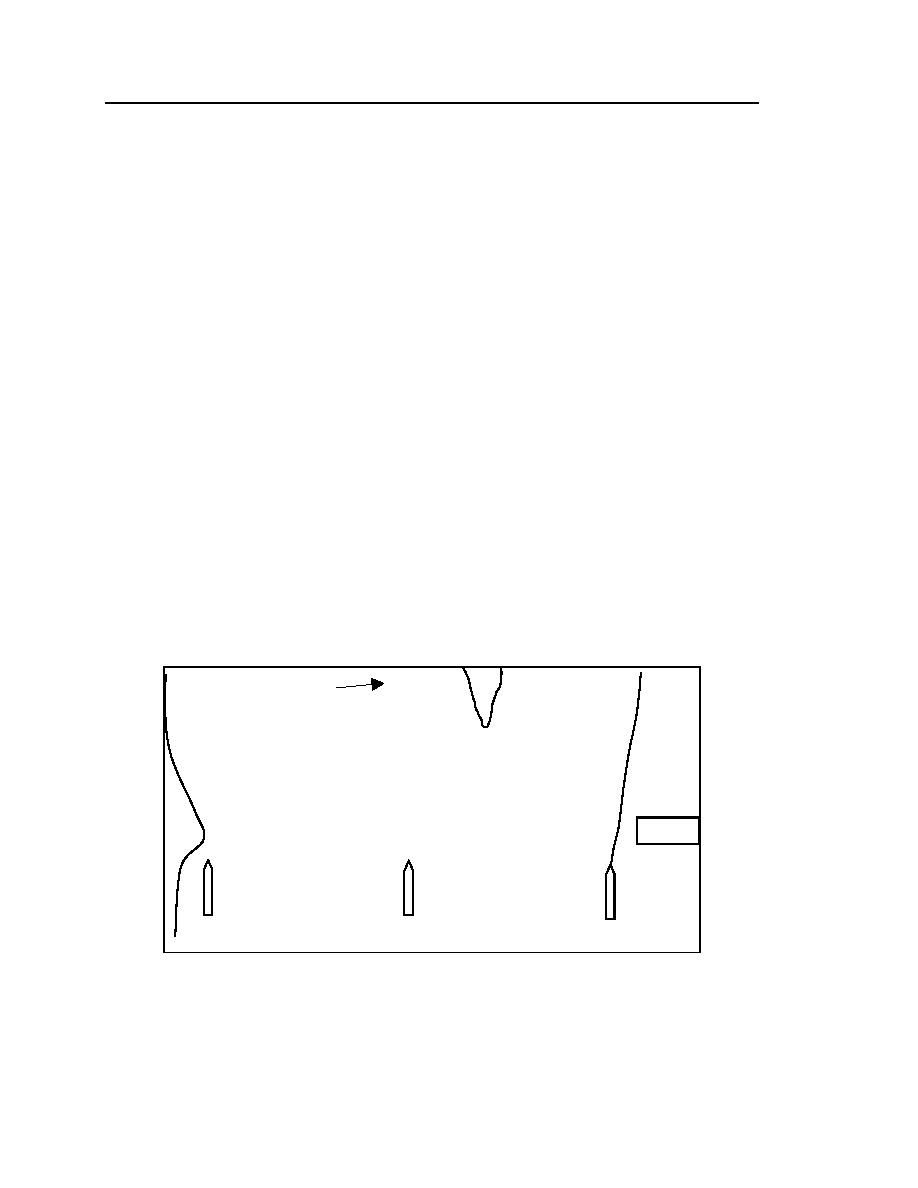
54
ERDC/CRREL TR-02-14
connected at the top of the probe passes down one of the pipes and is mechani-
cally attached to the anchoring section of the probe. The coax cable was weighted
to promote its burial in bed sediment. Self-burial reduces the probability of the
cable being snagged by debris and the unnecessary loading. Because of attenua-
tion and dispersion of the TDR signal as it propagates along the coax cable, the
signal's accuracy diminishes with increasing cable length. To minimize these
effects on the signal, the maximum length of cable used during this study was
700 ft.
Seven TDR probes were installed during December 1998 at the Culbertson
site, immediately upstream of the Route 16 bridge. The probes were jetted into
the riverbed using compressed air so that the tops of the probes just protruded
above the bed for situations of anticipated bed scour or at the maximum level of
anticipated sediment deposition. Bedrock was approximately 10 ft below the
surface; in some areas, though, the channel had scoured to bedrock. The depth to
bedrock presented a challenge in locating areas with sufficient sediment to later-
ally support the probes while the bed was being eroded. In some instances the
anchoring section was shortened to ensure that the sensing section of the probe
would be in an active erosion zone. The probes were installed on the banks of
both subchannels, at the downstream tip island, between two bridge piers, and
upstream of a midchannel bridge pier. The locations of the scour probes are
shown in Figure 34, a plan view of the site.
N
TDR 7
TDR 1
TDR 5
TDR 6
TDR 4
TDR 2
Shelter
TDR 3
Middle Pier
North Pier
South Pier
Figure 34. Locations of TDR bed-level monitors. TDR numbers and the
respective cable lengths: TDR 1 (400 ft); TDR 2, 4, 5, and 6 (500 ft); and TDR 7
(700 ft).



 Previous Page
Previous Page
